An ominous cloud enveloped the city of Bhopal 40 years ago. The fog of methyl isocyanate that leaked from the Union Carbide pesticide plant late in the night on 2 December 1984 killed thousands instantly and injured and maimed over half a million more. It has left an equally devastating legacy. From ensuring transparency during the investigation to patient care and securing just compensation for victims almost everything seems to have gone wrong.
Of Bhopal’s 1984 population of around 900,000, over 550,000 were affected by the deadly cloud. The poisonous gas cloud that hovered over the city in the early hours of 3 December had mostly dissipated after two hours, by which time thousands had perished in their sleep, out on the roads after stumbling from their beds or later in hospitals.
Methyl isocyanate is extremely toxic and can kill at just 3 ppm. Its vapours are readily absorbed through the lungs or skin and are severely irritating and corrosive to the respiratory tract and eyes. Symptoms of mild methyl isocyanate exposure include cough, chest pain and corneal ulcerations. Acute exposure to high concentrations may be quickly fatal due to respiratory failure and there is no antidote.
‘Lucky were the ones who died after inhaling the gas – at least they did not have to suffer endlessly all their lives,’ says Nasreen, a gas victim who has been helping survivors for over two decades.
Conflicting claims
The Bhopal plant primarily produced the pesticide carbaryl sold under the brand name Sevin. Methylamine was reacted with phosgene to form methyl isocyanate at the plant, which in turn was reacted with α-naphthol to form the final product, carbaryl (pictured).
Former Union Carbide workers have recounted in books and news articles that by early December 1984, many of the plant’s methyl isocyanate-related safety systems were faulty and many valves and lines were in poor condition. During an attempt to unclog a blocked line late on 2 December 1984, water is reported to have entered a methyl isocyanate storage tank containing 42 tonnes of the chemical. The methyl isocyanate reacted violently with the water and began leaking from the tank. An employee triggered an alarm at 12.50am on 3 December but it only sounded briefly outside the plant and was then shut off. Within an hour, nearly 30 tonnes of methyl isocyanate had escaped, passing over the south-east of Bhopal.
This version of the incident, which laid the blame on a malfunctioning and poorly maintained plant, was vehemently denied by Union Carbide. The firm described its control systems as robust and blamed the disaster on sabotage by ‘an employee with the appropriate skills and knowledge of the site [who] could have tampered with the tank’. Former workers at the plant have denied that sabotage was responsible for the leak.
Prior problems
The disaster did not come as a bolt from the blue. Between 1982 and 1984 a local journalist from Bhopal, Rajkumar Keswani, published several stories on safety lapses at the Union Carbide plant. On 26 September 1984, one of Keswani’s articles presciently warned ‘Bhopal [is] sitting on the brink of a volcano’.
Keswani reported that the pesticide plant, which was being run by Union Carbide India, a subsidiary of US firm Union Carbide, suffered a phosgene leak in December 1981 that killed one worker and seriously injured two others. Another leak in January 1982 hospitalised 25 workers. Keswani also reported that in October 1982, a gas leak affected thousands of residents of a nearby slum. Bhopal: The Inside Story recounts how workers protested against unsafe working conditions in 1982 but the termination of two union representatives effectively suppressed any further action.
Nasreen was only five years old then and living just 3km from the Union Carbide plant when she was exposed to methyl isocyanate. ‘That night there was thick smoke in the air and people told us that there has been a gas leak – you need to run away or else you will die. My parents said soon my eyes got swollen and there was constant water flow from my eyes,’ she says.
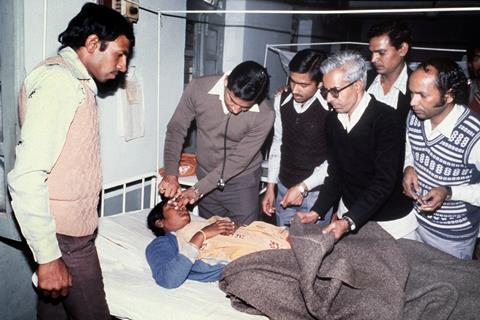
Her father was in bad shape too. ‘Shouting expletives, he was cursing those who had burnt red chillies and made everyone suffer severe burning sensation in [their] eyes not realising that [methyl isocyanate] was the culprit,’ she says. People were stumbling, vomiting, falling down and dying. It was in this melee, that Nasreen lost consciousness and woke up in hospital where she spent a month. She has since suffered from blurred vision and breathing problems and has gone on to develop hypertension. Her three children have serious health problems too from body ulcers to stunted growth.
Tears rolling down her cheeks, she relays how many of her close relatives lost their lives. Her own brother and his wife died due to the subsequent effects of the gas. Her father later died of a lung disease, her maternal aunt died of uterine cancer and her maternal uncle and his wife died of stomach ulcers. Nasreen later received INR100,000 (£928) compensation but complained there is no proper treatment for victims and they have had to spend enormous amounts on medicines.
Legal battles
In 1985, the Indian government unilaterally claimed the right to sue Union Carbide on behalf of the victims – without consulting them. The government agreed a final settlement with Union Carbide in 1989 of $470 million (£369 million) after first demanding $3.3 billion. Criminal cases against senior Union Carbide executives were also withdrawn, although these were later restored through litigation. Any extra payments victims needed were meant to be borne by the Indian government. Forty years later, victims are still fighting to secure further compensation, proper medical treatment and a clean-up of the area.
Legal experts have pointed out that the final settlement was based on understated and contentious numbers. ‘Over time, simple injuries became serious and serious injuries turned grievous and led to deaths, but compensation was paid only for simple or temporary injuries,’ says lawyer Sanjay Parikh, who has litigated on behalf of Bhopal survivors. Parikh calls the compensations ‘thoroughly inadequate’ and notes they started a decade late. ‘Treatments, too, started very late and there was no specialised treatment,’ he adds.
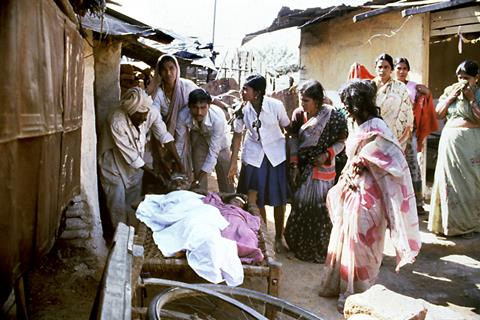
In early 1985, several teams of researchers, led by the Tata Institute of Social Sciences along with several other universities, arrived in Bhopal and began detailed house-to-house surveys. They were there to study the situation on the ground and the scale and extent of injuries. But no sooner had they finished surveying a third of the households, when they were banned from going any further and all their work was confiscated by police, never to be returned.
‘The categorisation of victims’ injuries was done without medical records resulting in victims and their dependents getting deprived of a fair assessment of their injuries and, therefore, just compensation,’ says Parikh. Last year, the high court in Madhya Pradesh, Bhopal’s state, noted that the process of digitising medical records was still not complete.
The Sambhavna Trust Clinic, an organisation set up to care for survivors of the Bhopal disaster, has just released data on 16,000 Bhopal survivors treated at the clinic over the last 16 years. Its data shows that while rates of several methyl isocyanate-induced diseases remain higher than unexposed patients, there are several new diseases that are manifesting at much higher rates. Rates of both obstructive and restrictive respiratory diseases were up to twice as high in Bhopal victims versus others who visited the clinic. Depression was also 2.7 times more prevalent, hypertension three times higher and diabetes five times higher in victims of the disaster.
The Indian government filed a petition with the supreme court in 2010 to reopen compensation cases for survivors whose needs remain unmet. It was seeking an additional $1.2 billion from Dow Chemical, which now owns Union Carbide. The petition was finally heard in 2023 – and dismissed.
The reopened criminal cases against top Union Carbide and Union Carbide India officials has been dragged out too. In 2010, eight Union Carbide India officials were sentenced to two years in jail for causing death by negligence but were immediately released on bail. Their sentences have been on appeal ever since. Four of them have died while awaiting the appeal and the remaining four are still on bail 14 years later.
Four Bhopal survivor groups petitioned the supreme court this November seeking additional compensation for survivors with cancers and fatal kidney disease, their lawyer Prasanna S told Chemistry World. ‘According to official records, 90% of the 11,278 survivors who were diagnosed with cancers and 91% of 1855 survivors diagnosed with fatal kidney diseases, and paid ex-gratia amounts by the government for the same, have only received INR25,000 (£232) as compensation,’ said Rasheeda Bi, president of a Bhopal victim’s organisation.
‘Union Carbide’s own documents clearly state that health damage due to [methyl isocyanate] exposure is permanent in nature, yet 93% of the claimants for compensation have been considered by the official agency to have suffered only “temporary” injury which is the main reason for under-compensation of the victims,’ says Rachna Dhingra of the Bhopal Group for Information and Action.
Chemical safety in India
India is the sixth largest producer of chemicals globally, but despite Bhopal’s legacy, chemical accidents continue to occur. Between 2020–23, 29 chemical incidents caused 118 deaths and 257 injuries. India is now in the process of finalising draft chemical safety rules which will cover manufacture, storage and import of hazardous chemicals, as well as chemical accident planning, preparedness and incident response. ‘India requires an inventory of all chemicals in use along with their health and environmental impacts, as [well as] also comprehensive legislation to cover their production, usage and safety,’ says Gopal Krishna, director of the Toxics Watch Alliance.
‘[Chemical disasters] are continuing to happen because there is no exemplary punishment in the Bhopal case,’ Dhingra says. ‘The process of proving liability is so hard and so expensive that people who are considered expendable will never be able to fight,’ she says. ‘With a disaster of such magnitude, so many injured and thousands dead, not one person has gone to jail even for a day.’
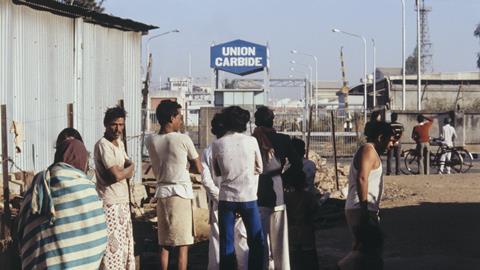




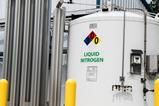
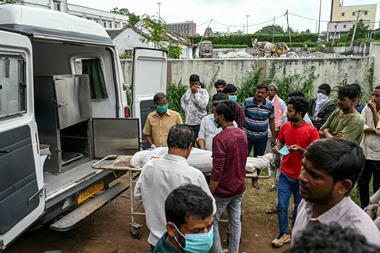
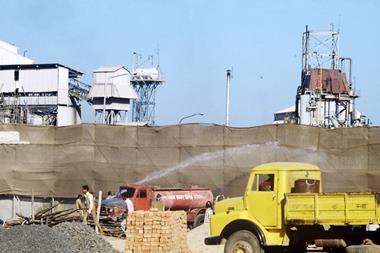
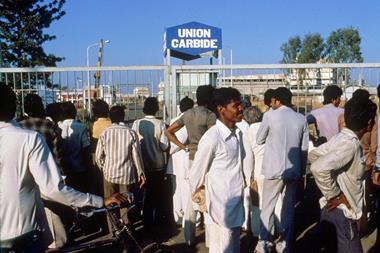

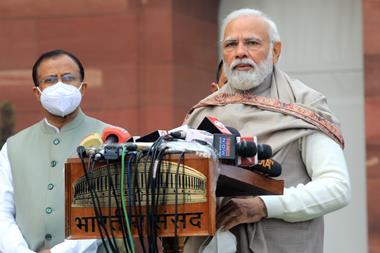

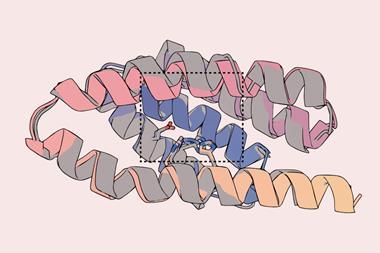

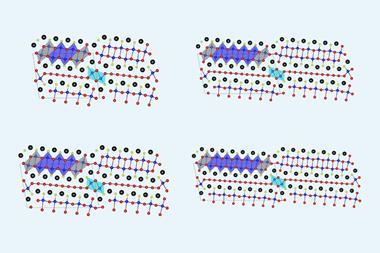
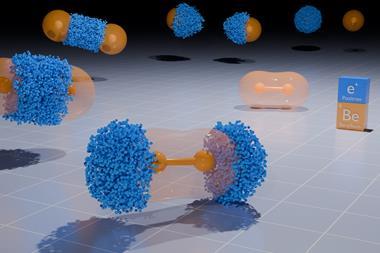
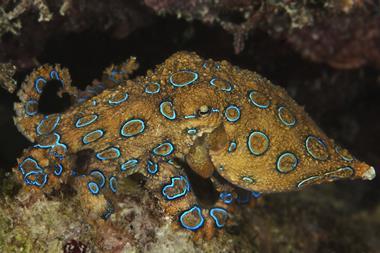

No comments yet